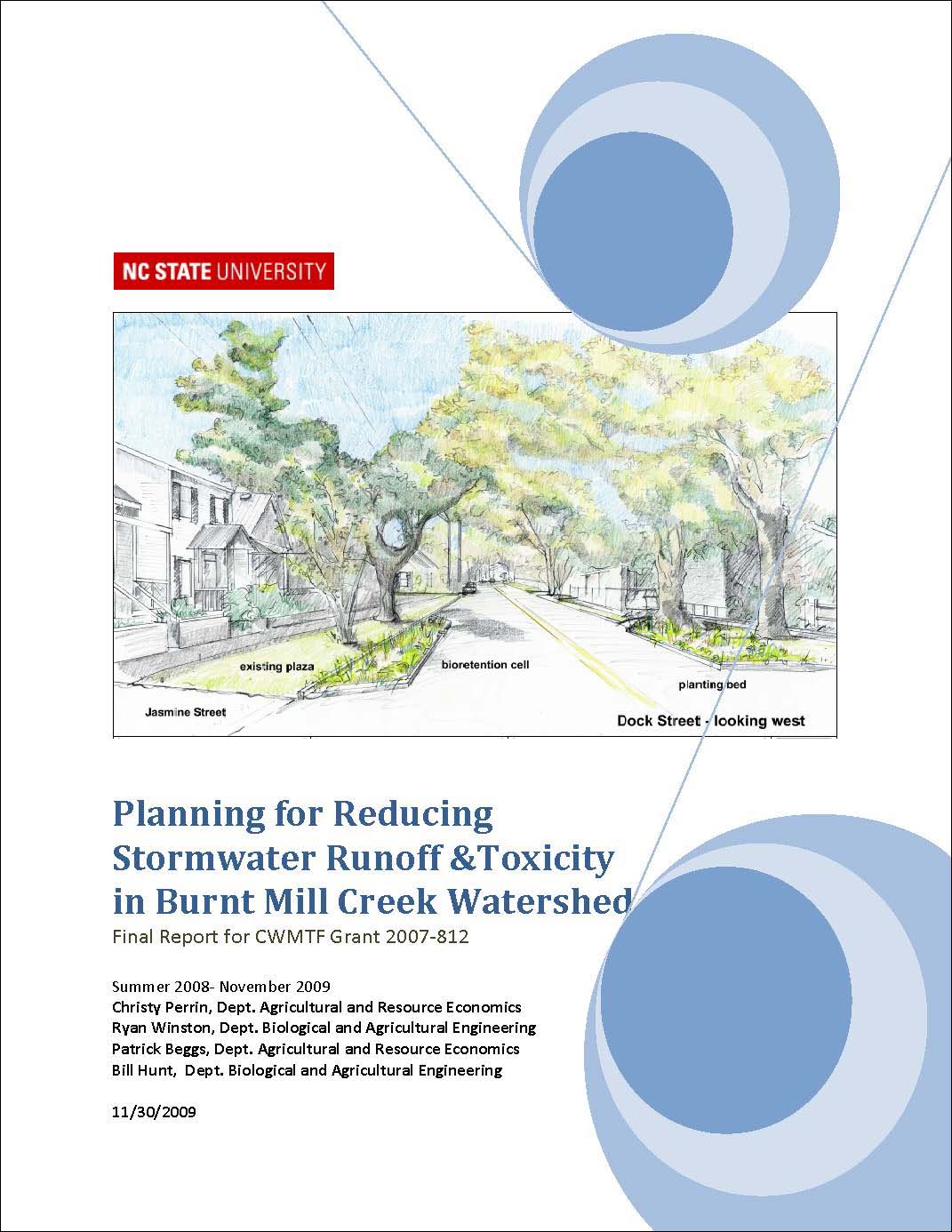Burnt Mill Creek Watershed Initiative
WRRI collaborated on watershed improvement projects to improve Burnt Mill Creek in the Lower Cape Fear Watershed. This long term effort arose from NC Division of Mitigation Services’ first watershed plan. Initially coordinated by NC Cooperative Extension, WRRI provided leadership from 2014- 2018. While WRRI is no longer coordinating the Burnt Mill Creek Initiative, local organizations are leading the way in continued watershed education and restoration.
Stories of Burnt Mill Creek
- DREAMS project engages youth in improving Burnt Mill Creek (2015)
- Bottom Neighborhood Empowerment Association Stormwater Project (2008)
- Celebrating Stewardship Event (2008)
Reports and Documents
- Engaging Youth in Improving Burnt Mill Creek Through High Priority Stormwater Retrofits (without appendices) (2017)
- Implementing Street Retrofits in Burnt Mill Creek – EPA319 Grant Final Report (2013)
- Burnt Mill Creek Case Study from Center for Watershed Protection (2011)
- Identifying and Designing Stormwater Retrofits – CWMTF Final Report (2009)
- New Hanover Watersheds Plan (2002)

PAHs in Burnt Mill Creek
- What to do to reduce PAHs in stormwater runoff (fact sheet)
- Polycyclic aromatic hydrocarbons are a class of petroleum chemicals.
- PAHs and excessive stormwater flows are the main impairing factors for Burnt Mill Creek.
- Research indicates that eliminating use of coal tar based sealants on asphalt parking lots and treating stormwater running off of parking lots are top strategies for reducing PAHs entering waterways.
- Apartment buildings are a top priority for eliminating the use of coal tar based sealants. USGS has identified a high risk of ingestion of carcinogenic dust by infants and children who live adjacent to lots sealed with coal tar based sealant.
Partners
Partners of this initiative included those listed below as well as many other citizens and local community groups who provided land for watershed improvement projects and/or work hard to improve Burnt Mill Creek. While WRRI is no longer coordinating the Burnt Mill Creek Initiative, local organizations are leading the way in continued watershed education and restoration.
